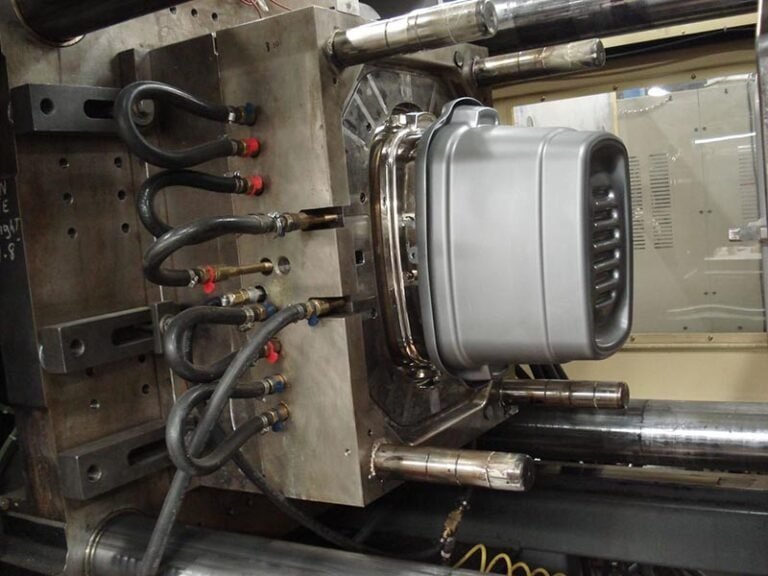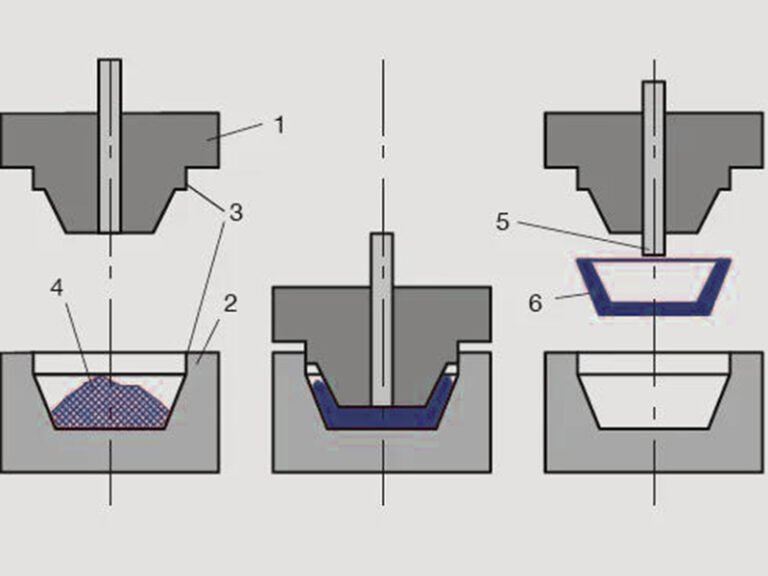Injection Moulding Large Parts is a sophisticated process that plays a crucial role in the production of large, high-precision plastic components. As industries demand more complex, durable, and cost-efficient solutions, the capabilities of large part injection molding have expanded. This article delves into the intricacies of injection molding for large parts, exploring the techniques, materials, advantages, and key factors like injection pressure and clamping tonnage. Whether for automotive, industrial, or consumer products, understanding these elements can significantly impact the success of large part manufacturing projects.
What is Injection Moulding Large Parts?
Injection moulding large parts refers to the process of producing substantial plastic components by injecting molten plastic into a mould under high pressure. This technique is commonly used in manufacturing large-scale, high-performance parts that require precision and durability. From automotive bumpers to industrial machinery components, the use of injection moulding large parts is prevalent in a variety of industries.
Unlike traditional moulding methods, this approach is specifically designed to accommodate larger geometries while maintaining the quality and consistency of smaller parts. It offers significant advantages when it comes to high-volume production, complex part designs, and achieving a high degree of dimensional accuracy.
The process requires careful consideration of factors such as injection pressure, clamping tonnage, material selection, and mold design to ensure the successful production of these larger components without defects such as warping, shrinkage, or air pockets. With the right techniques and equipment, large part injection molding offers a highly efficient and scalable solution for manufacturing large, high-quality plastic parts.
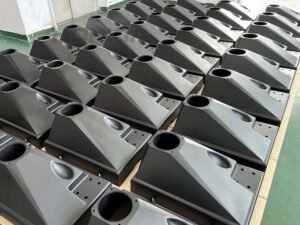
Common Materials for Injection Moulding Large Parts
When selecting materials for injection moulding large parts, it is essential to choose substances that offer the necessary balance of strength, flexibility, and durability. Common materials include thermoplastics, such as ABS, polycarbonate (PC), polypropylene (PP), and high-density polyethylene (HDPE), as well as reinforced plastics like glass-filled nylon and carbon-fibre composites.
These materials are selected based on their suitability for the intended application, taking into consideration factors such as temperature resistance, impact strength, chemical resistance, and ease of processing. For parts that require added strength and rigidity, materials like polyphenylene sulfide (PPS) or acrylonitrile butadiene styrene (ABS) are often preferred.
The Relationship Between Injection Pressure and Clamping Tonnage
Injection pressure refers to the force with which the molten material is injected into the mold cavity. It is one of the key parameters that determine how well the material fills the mold and takes the shape of the cavity. For large part injection molding, the injection pressure typically needs to be higher to ensure that the molten plastic fully fills the mold cavity, especially if the mold is intricate or has tight tolerances. This ensures that the large part will have a consistent structure, with no air pockets, voids, or flow marks.
Clamping tonnage refers to the force applied by the mold’s clamping unit to keep the mold halves securely closed during the injection process. Without sufficient clamping tonnage, the mold could open under pressure, causing defects in the part, such as flash or incomplete filling. For large parts, the required clamping tonnage increases significantly. Large molds generally require more force to keep them tightly sealed, especially when high injection pressures are used. If the clamping force is insufficient, the mold will not remain closed properly, and the result may be misalignment, parting line defects, or poor-quality parts.
As the injection pressure increases, the force exerted on the mold also increases, requiring more clamping tonnage to prevent the mold from opening. If the injection pressure is too high and the clamping tonnage too low, the mold may open, causing defects like flash or incomplete filling. Conversely, insufficient injection pressure may result in the mold not filling completely, affecting the part quality.
Choosing The Right Equipment for Injection Molding Large Parts
When it comes to injection molding large parts, selecting the right equipment is a key factor that directly influences the quality, efficiency, and cost-effectiveness of production. For large part injection molding, machines typically have a clamping force ranging from 1,000 tons to over 10,000 tons, depending on the size of the part and the material used. The machine must also have the capability to inject molten plastic at high pressures to ensure complete mold filling without defects.
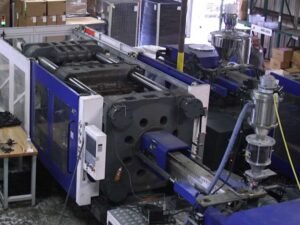
The Advantages of Injection Moulding Large Parts
The Advantages of Injection Molding Large Parts lie in the unique capabilities of the process when applied to larger, more complex components.
1. Ability to Produce Complex Geometries
Large part injection molding allows for the creation of intricate designs and complex shapes that are difficult or impossible to achieve with other manufacturing methods. For example, large automotive body panels, appliance housings, and intricate machinery components can be molded in one piece without the need for multiple assembly operations. This not only simplifies the design but also improves the overall strength and functionality of the part.
2. Enhanced Structural Integrity
When producing large plastic parts, the injection molding process ensures uniform material distribution and minimizes stress points. The high-pressure injection process is particularly advantageous in ensuring that the part’s structural integrity is maintained. This reduces the likelihood of weak spots, warping, or material inconsistencies that can occur with other molding methods.
3. Reduced Material Waste
Compared to alternative manufacturing methods like CNC machining or casting, large part injection molding is highly material-efficient. The process allows for precise control over the amount of material used, significantly reducing scrap and waste. This is especially important when working with expensive polymers, as it makes large part production more cost-effective.
The Applications of Injection Moulding Large Parts
Injection moulding large parts is widely used across various industries due to its versatility and ability to produce high-quality, durable components. In the automotive sector, large parts like bumpers, dashboards, and exterior panels are commonly made using this technique.
The examples of injeciton molding large parts as bellow:
- Body panels (e.g., bumpers, door interior panels)
- Dashboard panels
- Door panels
- Wheel covers and trim pieces
- Machine housings (e.g., enclosures for motors, pumps, compressors)
- TV and monitor casings
- Refrigerator and washing machine panels
- Air conditioner housings and components
- Plastic chairs and tables
- Cabinets and plastic storage units
- Plastic sheds (outdoor storage units)
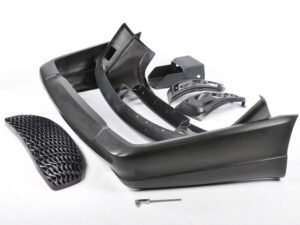
Conclusion
With large parts injection moulding ability to produce large, high-precision parts efficiently, it is a go-to method for everything from automotive components to industrial machinery. Understanding the key factors such as material selection, the balance between injection pressure and clamping tonnage is critical to ensuring the success of large part production.
For a successful large part molding project, collaborating with a professional molding company like Flexiparts in China is essential. We offer the right tonnage machinery to handle large part injection molding. Our team will support you throughout the entire project, ensuring the best outcomes at every stage.

